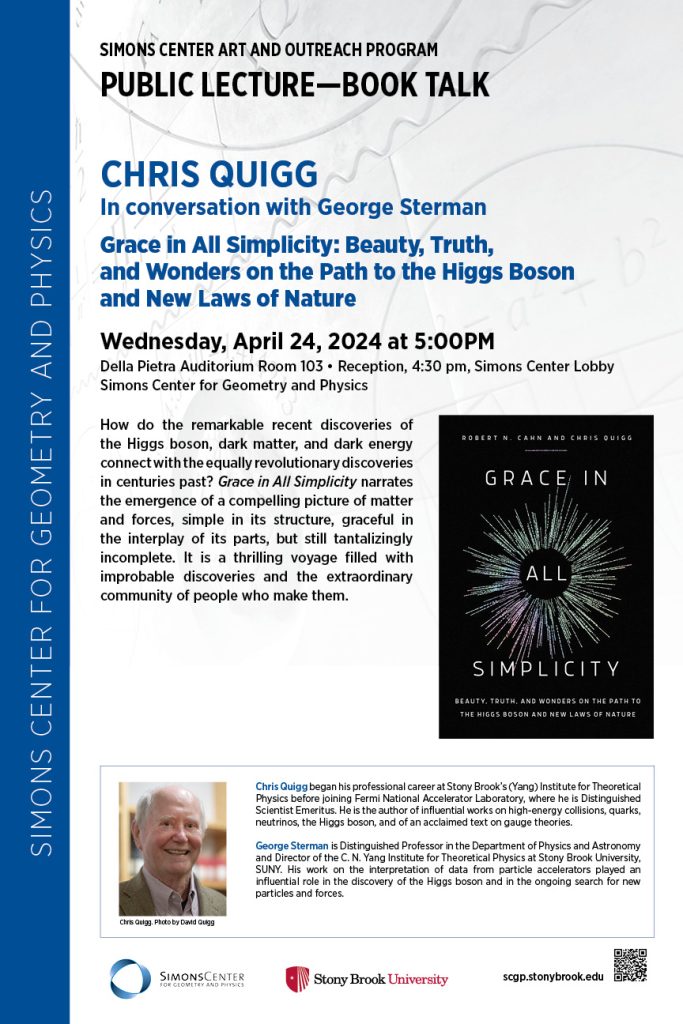Chris Quigg
In conversation with George Sterman
Grace in All Simplicity:
Beauty, Truth, and Wonders on the Path to the Higgs Boson and New Laws of Nature
(with Robert N. Cahn, Pegasus, 2023)
Wednesday, April 24, 2024, 5:00 pm
Della Pietra Family Auditorium, Room 103
Reception at 4:30 pm, Simons Center Lobby
How do the remarkable recent discoveries of the Higgs boson, dark matter, and dark energy connect with the equally revolutionary discoveries in centuries past? Grace in All Simplicity narrates the emergence of a compelling picture of matter and forces, simple in its structure, graceful in the interplay of its parts, but still tantalizingly incomplete. It is a thrilling voyage filled with improbable discoveries and the extraordinary community of people who make them.
“A vibrant history traces the triumphs and missteps of quantum, nuclear, and particle physics. What a joy, to pick up Grace in All Simplicity and encounter stunning true-life tales of passionate researchers grappling with the challenges of the natural world in all its rawness and danger. It is such human touches, along with colorful analogies and descriptions, that make Grace in All Simplicity shine.” Paul Halpern, Science
Chris Quigg began his professional career at Stony Brook’s (Yang) Institute for Theoretical Physics before joining Fermi National Accelerator Laboratory, where he is Distinguished Scientist Emeritus. He is the author of influential works on high-energy collisions, quarks, neutrinos, the Higgs boson, and of an acclaimed text on gauge theories. Chris has held many visiting appointments, including École Normale Supérieure (Paris) and CERN (Geneva). He received the American Physical Society’s J. J. Sakurai Prize for theoretical particle physics and the German Alexander von Humboldt Prize. Grace (with co-author Bob Cahn) is his first book for a broad readership.
George Sterman is Distinguished Professor in the Department of Physics and Astronomy and Director of the C. N. Yang Institute for Theoretical Physics at Stony Brook University, SUNY. His work on the interpretation of data from particle accelerators played an influential role in the discovery of the Higgs boson and in the ongoing search for new particles and forces.


